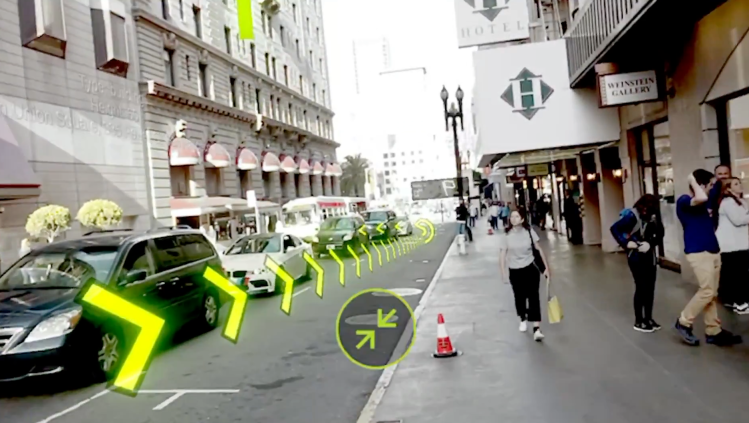Presented by Mapbox
Catching virtual creatures in Pokémon Go, adding the dancing hot dog filter in Snapchat — these are the ways consumers have experienced Augmented Reality (AR) to date. But this is about to change in a major way. With yesterday’s iOS 11 launch, AR-enabled applications are now available to hundreds of millions of iPhone and iPad users.
As AR becomes commoditized and developers begin to explore what is possible, the release of Apple’s ARKit and Android’s ARCore signals the arrival of a period of broader testing and adoption.
Our team at Mapbox is working with the developer community to help define the art of what is possible in AR through our open source mapping platform. We believe the real power of AR lies in tying location awareness to the experiences in games along with consumer and enterprise applications.
To this end, we’ve made our tools for location data and maps available for ARKit, ARCore, and Unity. In order to illustrate the capabilities of the location palette in AR, we’ve created the World Exploration Demo that shows developers how to use various Mapbox tools and SDKs to apply a valuable and monetizable use case to an everyday experience. In this case, it’s navigating to Union Square Park in San Francisco. Whereas many AR demos are anchored to the tabletop, you’ll see this one takes things to the next level:
Pretty cool, right? While you previously would search for the park and rely on a traditional 2D map to guide you there, the World Exploration Demo uses our Maps for Unity SDK to give you access to our mapping, navigation, and search APIs to make this experience much more contextual and interactive. Here’s how:
Our Unity SDK lets developers render a 3D-world, based on real-world location data and beautiful high-res satellite imagery. This SDK is compatible with both ARKit and ARCore, and makes it easy to project a Mapbox Unity world onto a flat surface or literally step into an experience where various forms of location awareness are mapped onto the world around you like in the demo above.
We also have an ARKit-specific toolkit for Unity that makes interacting between ARKit and Unity easier for Unity developers, as well as the Mapbox ARKit iOS library to give iOS developers tools to bring real-time location data to their AR experiences. (Android developers, stay tuned for our ARCore offering.) Our AR libraries reconcile AR tracking with a phone’s GPS to enable location-based experiences with global-scale data coverage.
Mapping + Search
As seen in the demo, Mapbox makes it possible for users to see a 3D map projection of the environment around them, including buildings, as they search for a location or point of interest. Once they choose a destination like Union Square Park in the demo, the 3D map zooms in and maps onto the real-world environment around them.
Navigation
Upon zooming in, users enter a fully immersive navigation experience, where they not only see directions and waypoints projected into their field of view, but also information “billboards” projected onto buildings. These geocoded points allow developers to tie in any type of multimedia data they want associated with a location or point of interest (e.g., a store showcasing a virtual billboard over its entrance).
This demo is just one of many as we continue to experiment with location awareness and AR, and hopefully will inspire our talented community of developers to create new business models, from reimagining the passenger experience in autonomous vehicles to accurately gauging the impact of urban planning projects. We’re excited to explore this new frontier together.
We welcome feedback and input on tools that can enable our community to be more productive and better monetize their work. Discover what you can build with our tools at blog.mapbox.com and apply to join our Developer Program for AR, VR and Games. Share your own development projects by tweeting @mapbox using #BuiltWithMapbox.
Paul Veugen is VP Mobile for Mapbox.
Sponsored posts are content produced by a company that is either paying for the post or has a business relationship with VentureBeat, and they’re always clearly marked. Content produced by our editorial team is never influenced by advertisers or sponsors in any way. For more information, contact sales@venturebeat.com.

